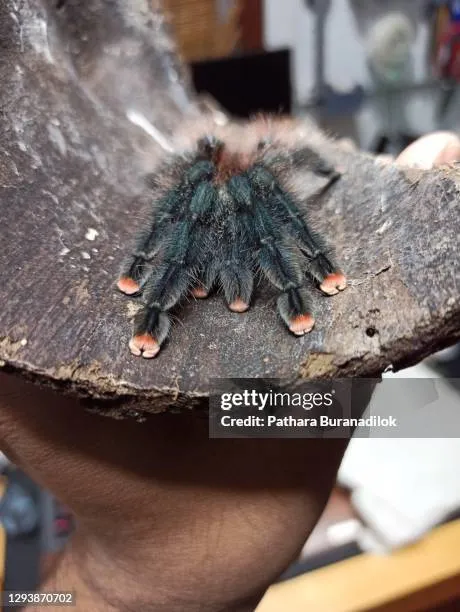Understanding the Pink Toe Tarantula
The Pink Toe Tarantula, scientifically known as Avicularia avicularia, is a captivating and popular New World tarantula species. Its striking appearance, docile temperament, and manageable size make it an attractive choice for both beginner and experienced tarantula keepers. This guide provides comprehensive information to ensure your Pink Toe Tarantula thrives, covering everything from habitat setup and feeding to health care and breeding. With proper care, these fascinating creatures can bring years of enjoyment and intrigue.
Origin and Habitat
Pink Toe Tarantulas originate from the tropical rainforests of South America and the Caribbean. They are arboreal, meaning they live primarily in trees, where they build silken nests. Understanding their natural habitat is crucial for replicating it in captivity. They thrive in humid environments with plenty of vertical space to climb and hide. Mimicking their natural environment is key to their well-being and encourages natural behaviors, leading to a healthier and happier tarantula.
Identifying a Healthy Pink Toe Tarantula
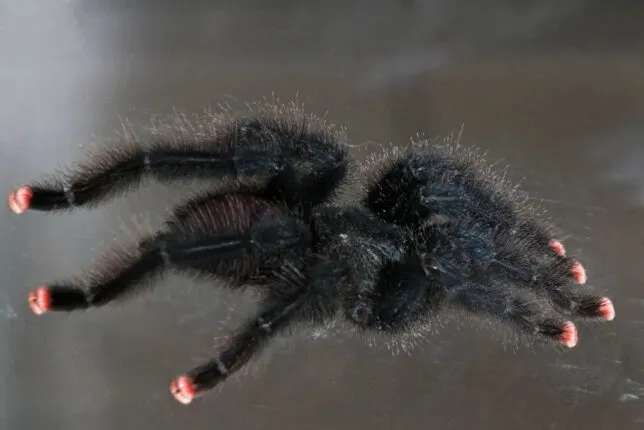
A healthy Pink Toe Tarantula exhibits several key characteristics. Its coloration should be vibrant, with the namesake pink tips on its legs and a generally glossy appearance. The abdomen should be a normal size, not overly shrunken (indicating dehydration) or excessively large (potentially indicating overfeeding). Active tarantulas that move around their enclosure and readily consume food are also signs of good health. Regularly check your tarantula for any signs of mites, fungal infections, or other abnormalities. A healthy tarantula is a happy tarantula.
Essential Enclosure Setup
Creating the right environment is critical for the health and happiness of your Pink Toe Tarantula. The enclosure should mimic its natural arboreal habitat, providing ample space for climbing and hiding. Proper ventilation, temperature, and humidity are essential. A well-designed enclosure reduces stress, encourages natural behaviors, and prevents health issues. Investing time and effort in the initial setup will pay off in the long run, ensuring your tarantula thrives.
Choosing the Right Tank Size
Tank size is important for your Pink Toe Tarantula’s well-being. A juvenile tarantula can comfortably live in a smaller enclosure, such as a 5-gallon tank. However, as they grow, they will need more space to thrive. An adult Pink Toe Tarantula requires an enclosure that is at least 10 gallons, preferably taller than it is wide, to accommodate its arboreal lifestyle. Make sure the enclosure has a secure lid to prevent escapes and adequate ventilation to maintain proper humidity levels. Overcrowding can lead to stress and other health problems.
Substrate and Decor
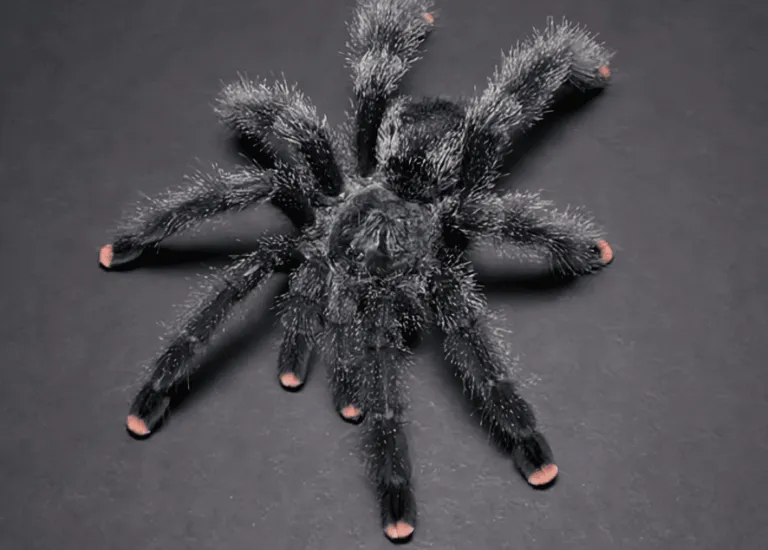
The substrate provides a comfortable floor for your tarantula and helps maintain humidity. A good substrate for a Pink Toe Tarantula includes a mixture of peat moss, coconut fiber, and sphagnum moss. This blend retains moisture well while allowing for good drainage. Provide ample decor, such as cork bark, branches, and artificial plants. These additions not only make the enclosure more visually appealing, but also provide climbing surfaces and hiding places. Ensure all decor is free of pesticides and sharp edges. A naturalistic setup enhances the tarantula’s quality of life.
Temperature and Humidity Control
Maintaining the correct temperature and humidity is crucial for the health of your Pink Toe Tarantula. The ideal temperature range is between 75-85°F (24-29°C). Use a heat lamp or under-tank heater to maintain this temperature, but avoid direct heat sources that could burn your tarantula. Humidity should be maintained between 70-80%. Use a hygrometer to monitor humidity levels. Mist the enclosure regularly with dechlorinated water, but avoid over-misting, which can lead to mold growth. Good air circulation is also important to prevent fungal infections and respiratory issues.
Feeding Your Pink Toe Tarantula
Proper nutrition is vital for your Pink Toe Tarantula’s growth and overall health. These tarantulas are opportunistic feeders, meaning they will eat whatever they can catch. A balanced diet ensures they receive all the necessary nutrients. Overfeeding can lead to health problems, so it’s important to follow a proper feeding schedule. By providing the right food at the right frequency, you can keep your Pink Toe Tarantula healthy and thriving.
What to Feed
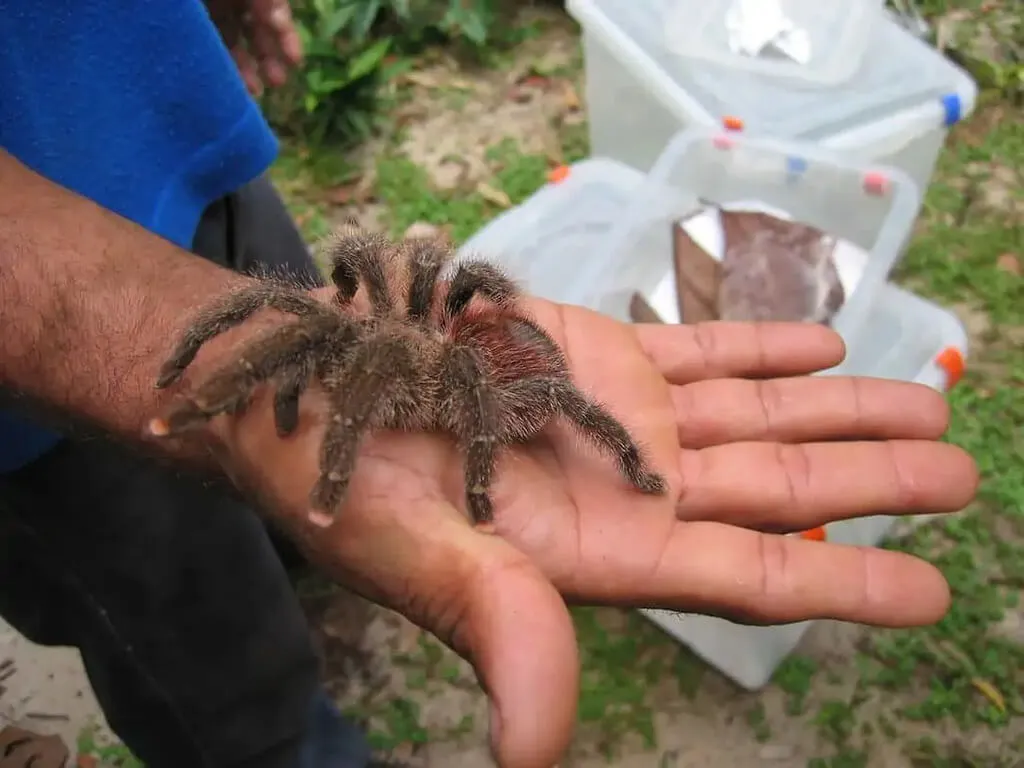
Pink Toe Tarantulas primarily eat insects. Good food options include crickets, roaches, mealworms, and occasionally, small moths or other appropriately sized insects. It is crucial to gut-load the insects with nutritious food (vegetables, fruits, and commercial insect food) for 24 hours before feeding them to your tarantula. This ensures that your tarantula receives the necessary vitamins and minerals. Remove uneaten insects after 24 hours to prevent stress and potential injury to your tarantula. Always make sure that prey items are smaller than the tarantula’s body.
Feeding Frequency
The feeding frequency depends on the tarantula’s age and size. Spiderlings (young tarantulas) should be fed every other day. Juveniles can be fed 2-3 times a week, while adult Pink Toe Tarantulas only need to eat once or twice a week. Adjust the feeding schedule based on the tarantula’s abdomen size. If the abdomen is plump, the tarantula is well-fed. Refrain from feeding before a molt. It is important not to overfeed, as this can lead to premature molting, which is not a healthy situation for your pet.
Water and Hydration
Fresh water is crucial for your tarantula’s survival. Always provide a shallow water dish filled with clean, dechlorinated water. The water dish should be small enough that the tarantula cannot drown in it. Check the water dish daily and refill it as needed. In addition to the water dish, misting the enclosure regularly helps maintain humidity levels and provides an additional source of hydration. Ensure the water is fresh and clean to prevent the growth of bacteria. Avoid using tap water without dechlorinating it.
Handling and Interaction
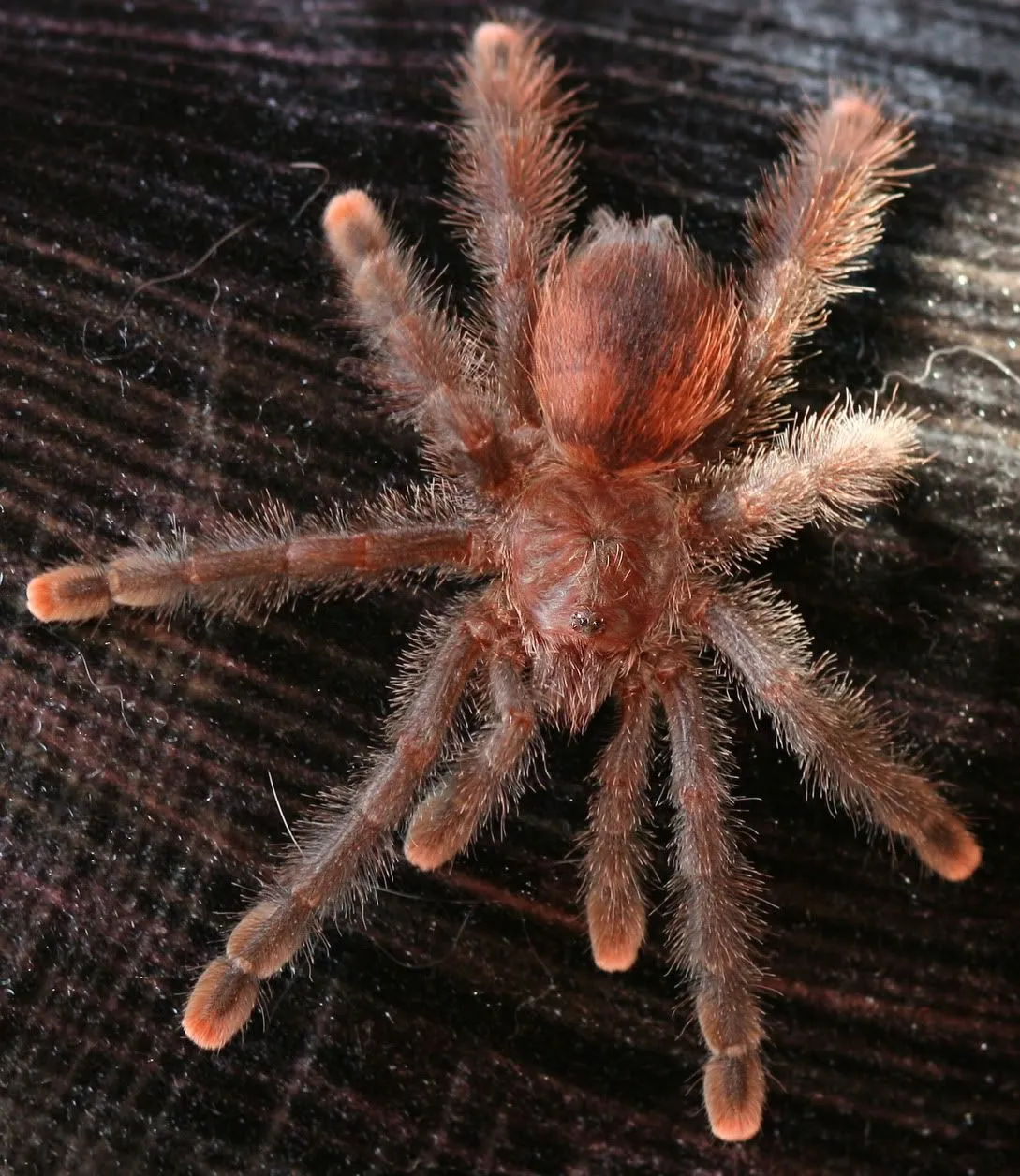
Pink Toe Tarantulas are generally docile, but handling them should be approached with caution. While some keepers enjoy interacting with their tarantulas, it’s important to prioritize the tarantula’s well-being. Understanding their behavior and practicing safe handling techniques are essential. Overhandling can lead to stress and potential injury to both the tarantula and the handler.
Handling Safety
Before handling your Pink Toe Tarantula, make sure you are calm and that the tarantula is calm as well. Always handle your tarantula over a soft surface, such as a bed or a carpet, in case it falls. Avoid sudden movements and loud noises. If the tarantula appears agitated or defensive, it is best not to handle it. A bite from a Pink Toe Tarantula is not considered medically significant, but it can be painful. Always wash your hands thoroughly after handling your tarantula. It is often best to observe your tarantula rather than handling it.
Observing Your Tarantula
Often, the best way to interact with your Pink Toe Tarantula is to observe it in its enclosure. You can learn a lot about your tarantula’s behavior, such as its feeding habits, molting cycle, and preferred hiding spots, by watching it. Provide interesting decor and enrichment activities to keep your tarantula active and engaged. Observe your tarantula’s behaviors over a period of time to recognize when it’s stressed or has other needs. This can lead to the better care of your pet.
Common Health Issues
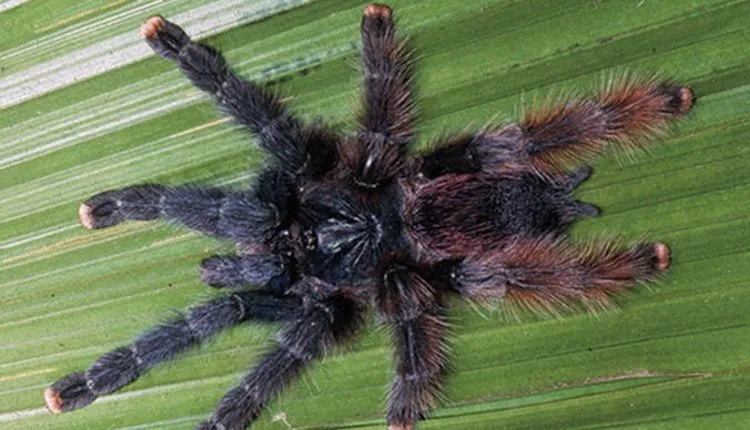
Like all animals, Pink Toe Tarantulas are susceptible to certain health issues. Recognizing the signs of illness and taking preventative measures are crucial for their well-being. Regular observation and a clean, well-maintained enclosure are the best ways to ensure your tarantula stays healthy. If you suspect your tarantula is sick, consult with a veterinarian experienced in exotic animals.
Signs of Illness
Several signs can indicate that your Pink Toe Tarantula is sick. These include lethargy, loss of appetite, unusual posture, and the presence of mites or other parasites. A shrunken abdomen may indicate dehydration, while a swollen abdomen might be a sign of overfeeding or a problem with molting. Difficulties in molting can cause severe stress to the tarantula and the tarantula will eventually die if the problem is not addressed. If you notice any of these signs, isolate the tarantula and seek professional veterinary advice immediately.
Preventative Measures
Preventing illness in your Pink Toe Tarantula involves several key practices. Maintaining a clean enclosure, providing a balanced diet, and ensuring proper temperature and humidity are crucial. Quarantine any new tarantulas before introducing them to your collection. Regularly check your tarantula for mites and other parasites. Avoid overfeeding, as this can lead to molting problems and other health issues. Finally, keep a close eye on the behavior of your tarantula. Early detection of any problems is vital for treatment and the survival of your pet.
Breeding Pink Toe Tarantulas
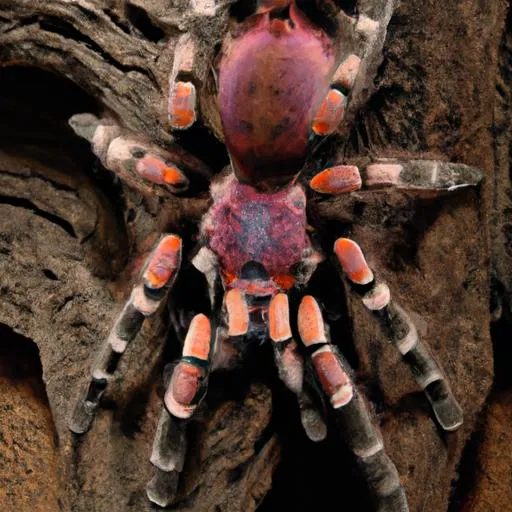
Breeding Pink Toe Tarantulas can be a rewarding but challenging endeavor. It requires a good understanding of their mating behavior, proper preparation, and dedicated care for the spiderlings. Breeding tarantulas requires a great deal of knowledge and experience. Researching thoroughly and being prepared for the complexities of breeding are critical for success.
Mating and Egg Sac
Mating Pink Toe Tarantulas involves introducing a mature female to a mature male. The male will typically drum on the female’s web before attempting to mate. After mating, it is important to separate the male and female to prevent the female from cannibalizing the male. The female will then create an egg sac, which contains numerous eggs. The egg sac will be guarded by the female until the spiderlings hatch. The egg sac can be as small as a walnut or as large as a golf ball.
Caring for Spiderlings
Once the spiderlings hatch, they will need their own individual enclosures. Providing small, appropriately sized enclosures and food is important. Feed them small insects, like fruit flies, every other day. Maintain the proper temperature and humidity. The spiderlings will molt several times as they grow. It is important to maintain a clean, healthy environment for the spiderlings to ensure that they thrive. Separating them early will also prevent cannibalism. This part of the process requires significant dedication and careful attention to detail.
